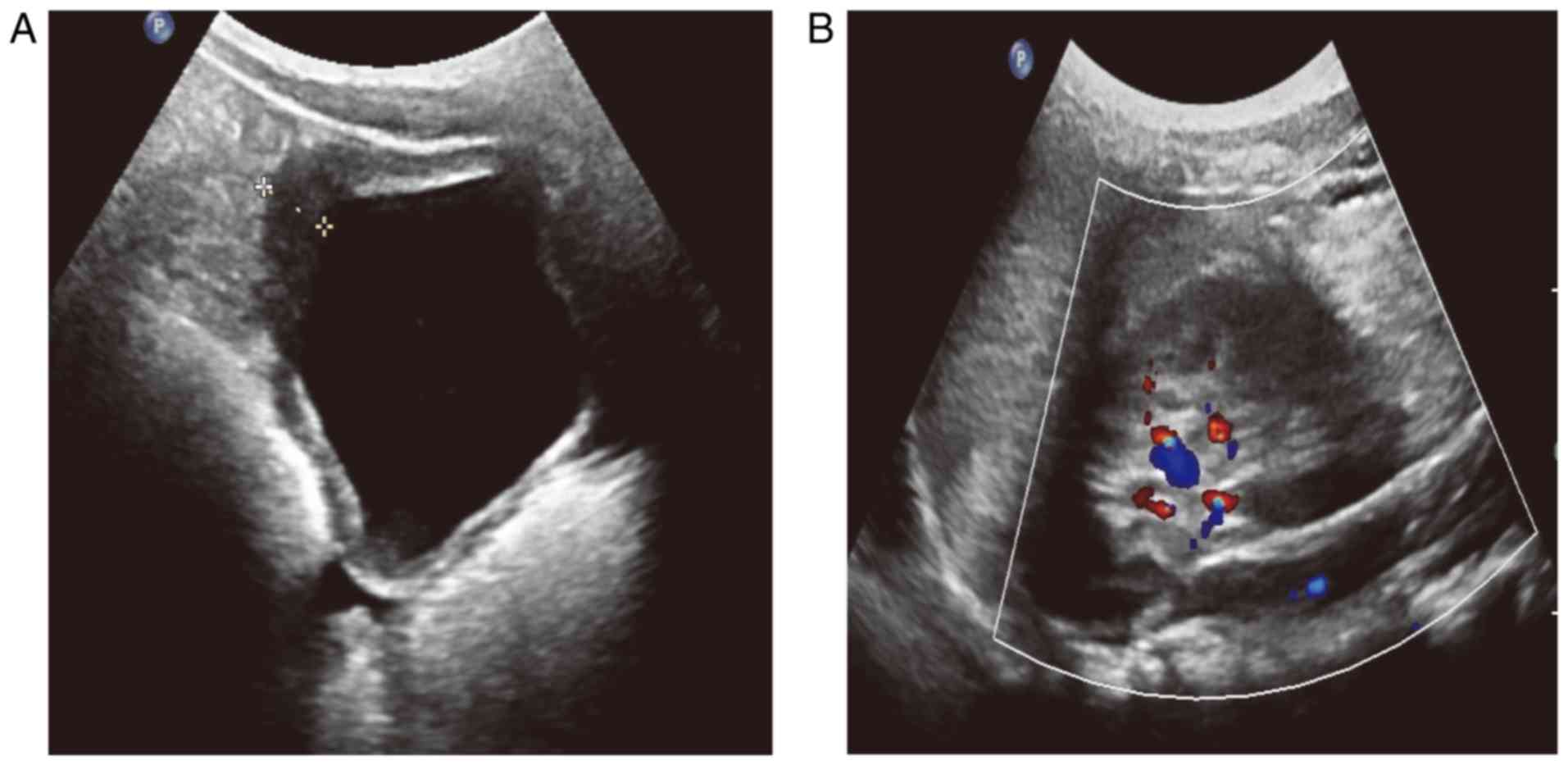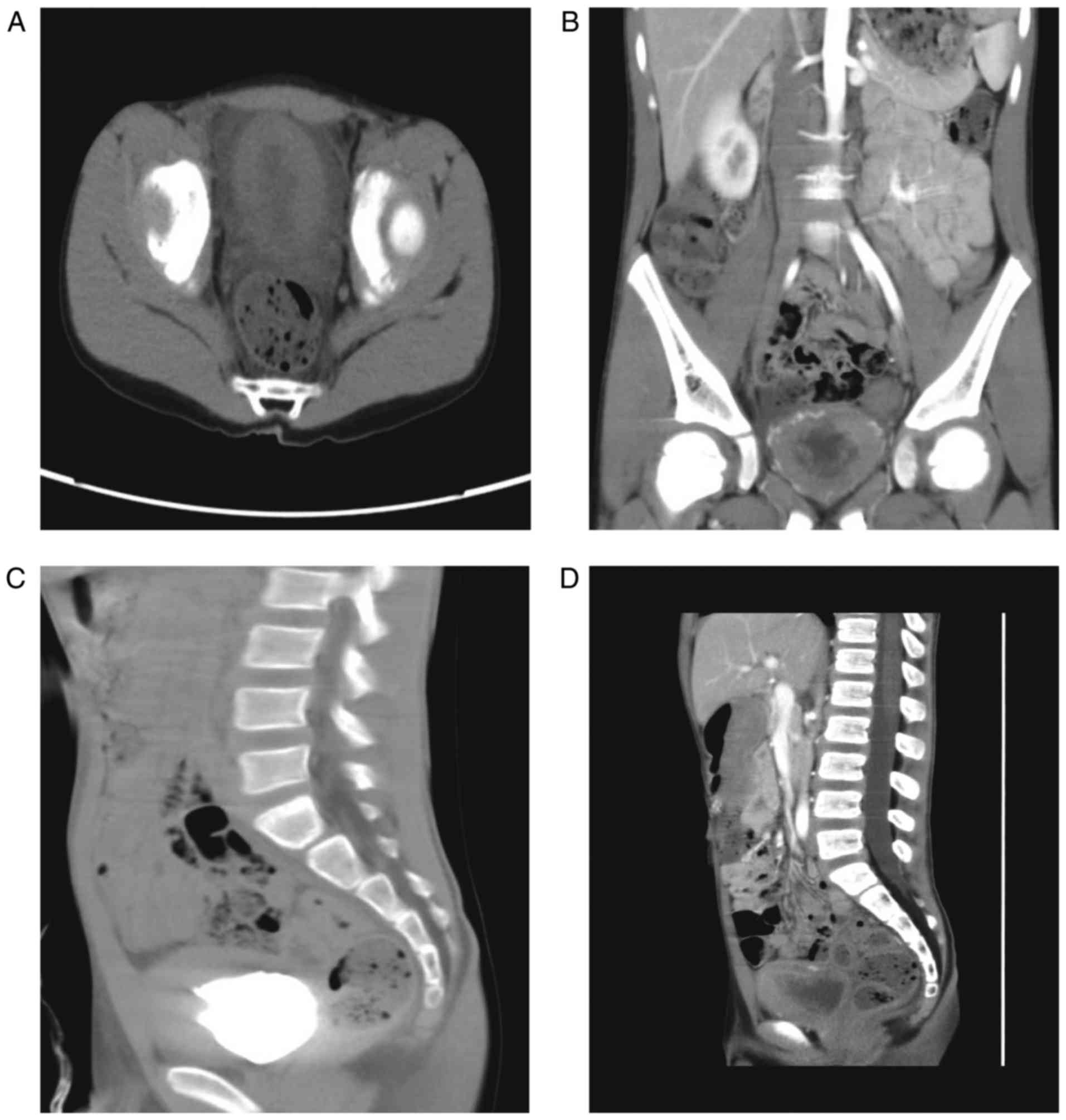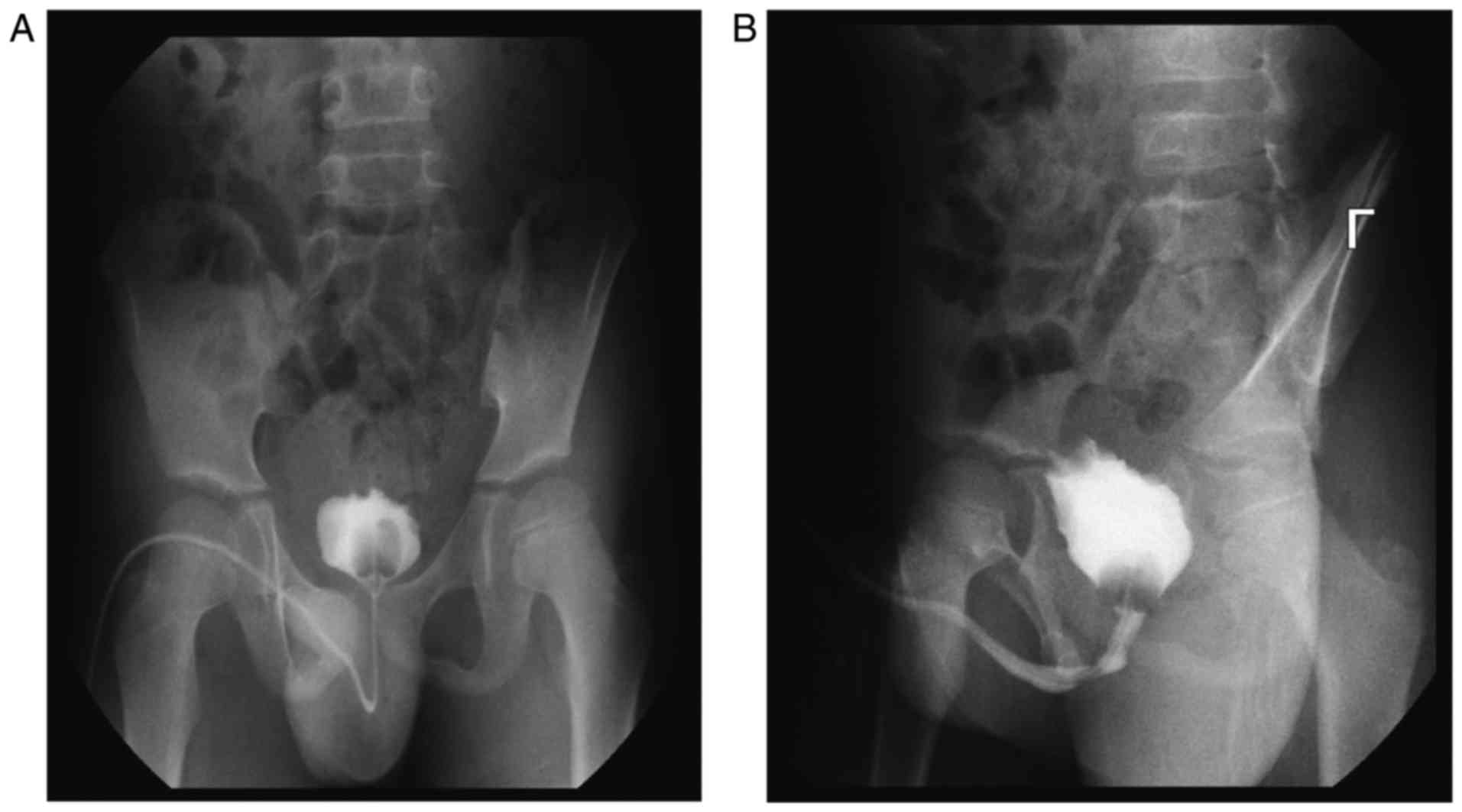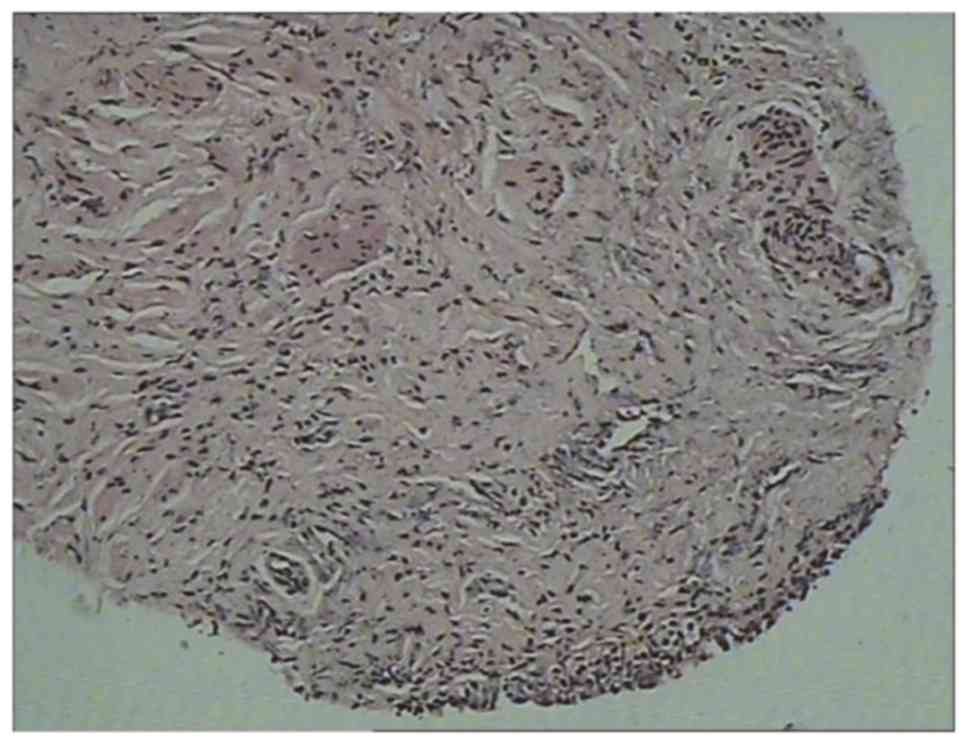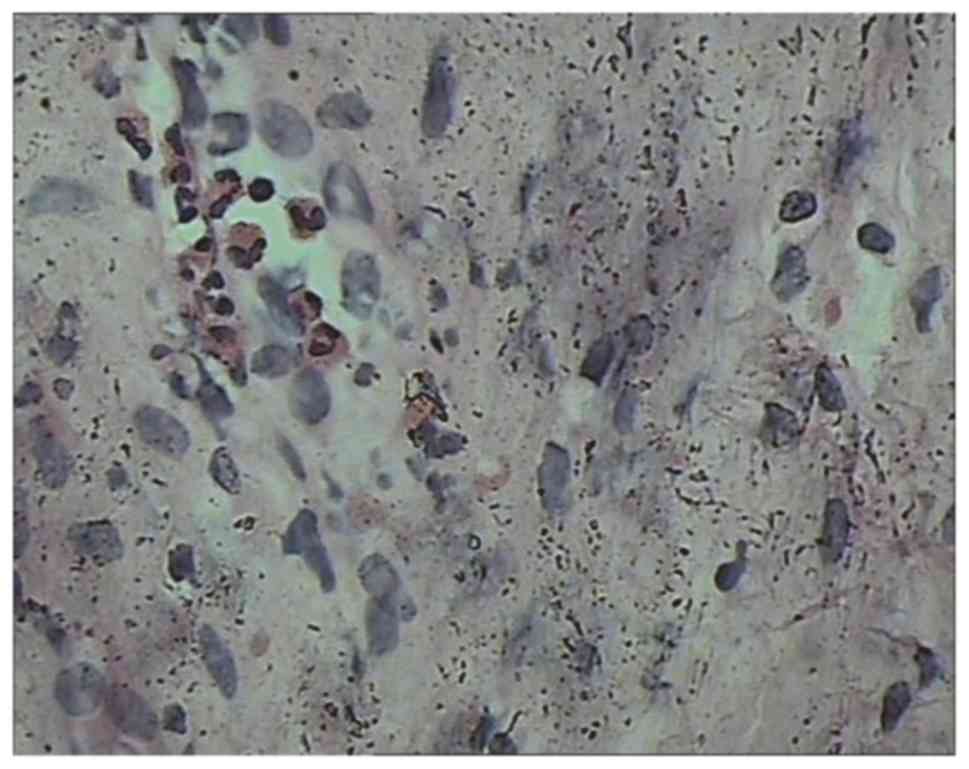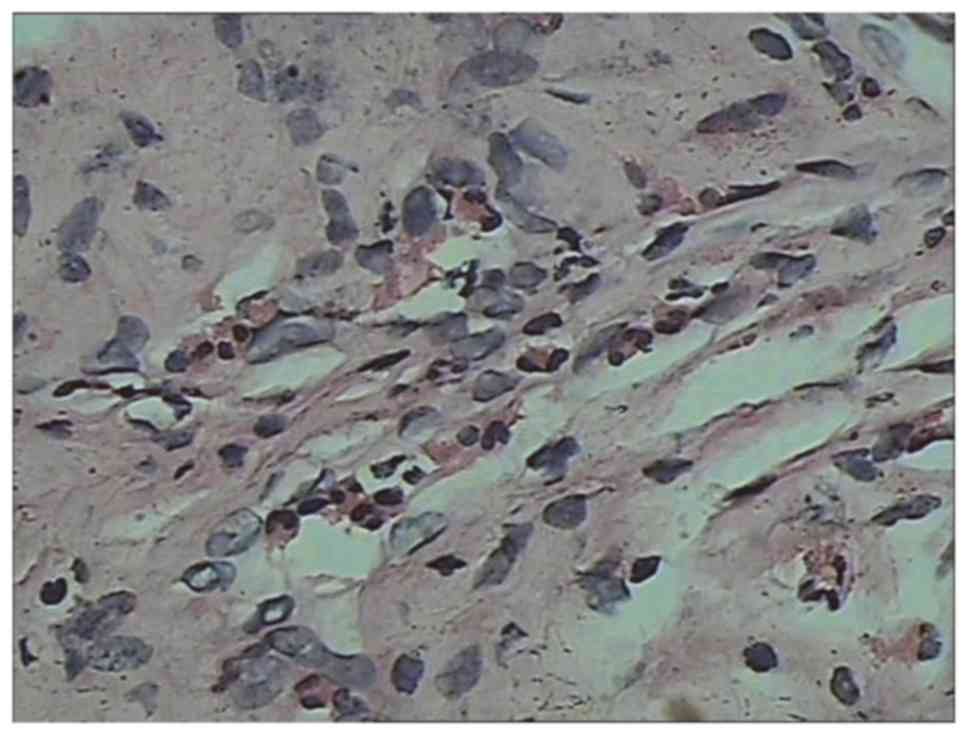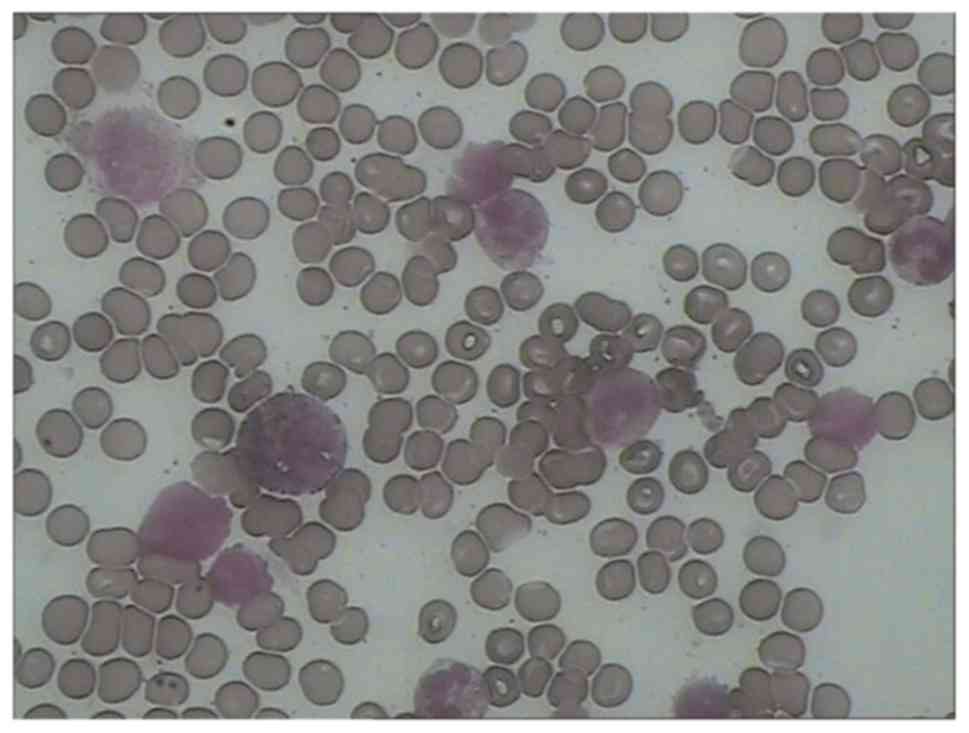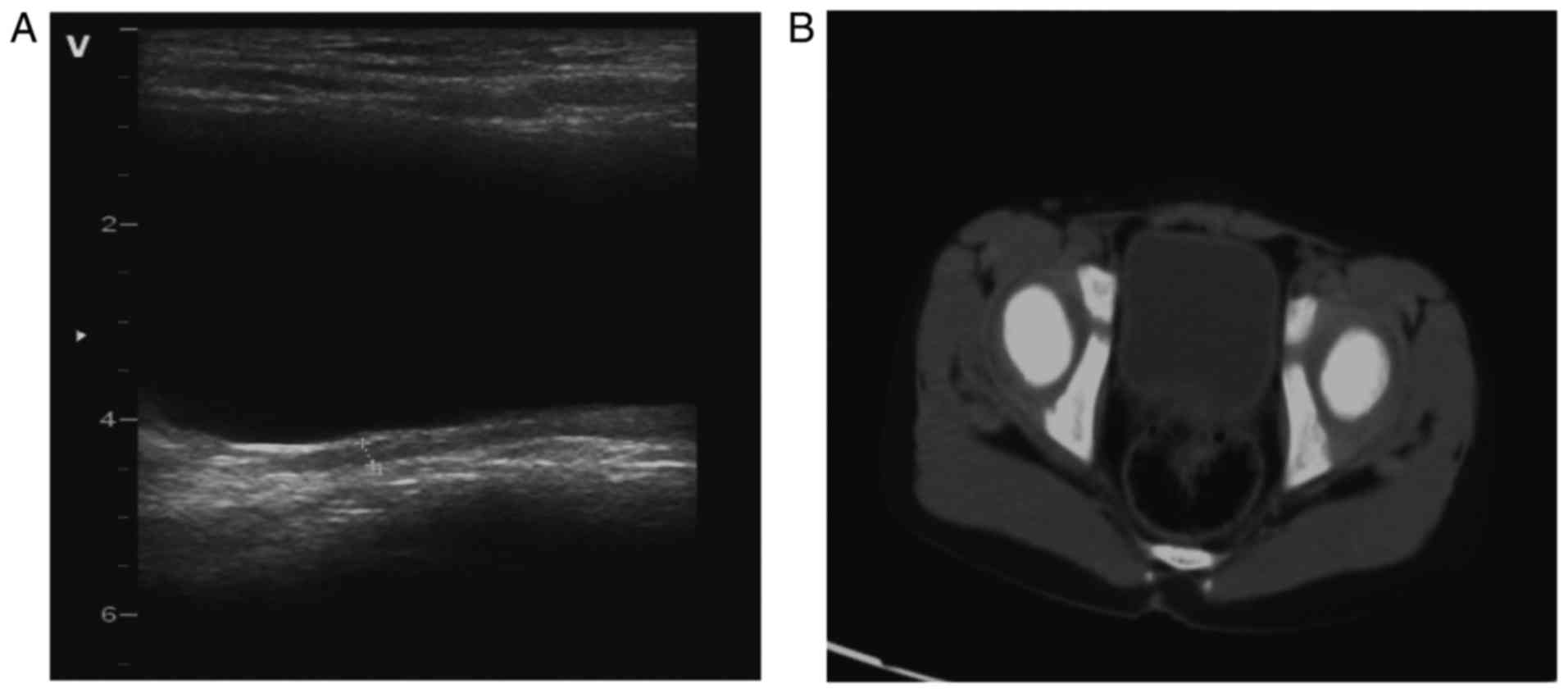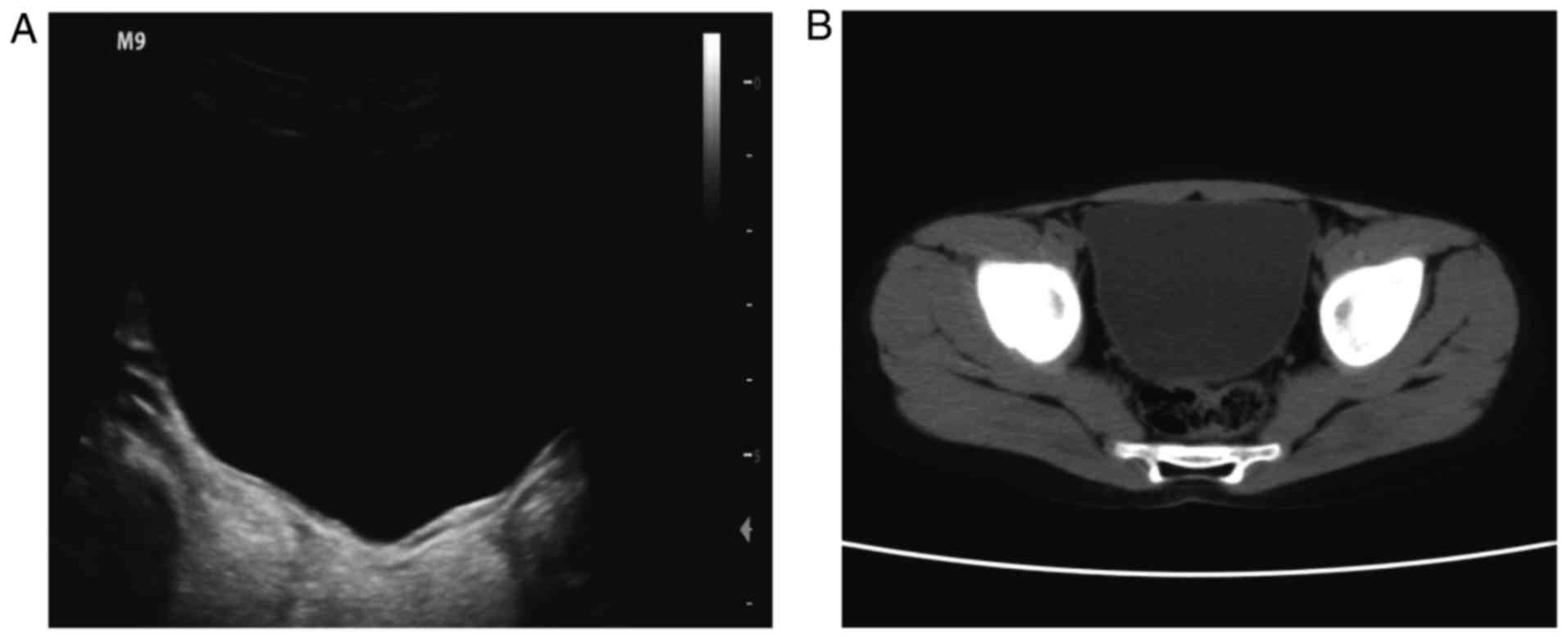|
1
|
Brown EW: Eosinophilic granuloma of the
bladder. J Urol. 83:665–668. 1960. View Article : Google Scholar : PubMed/NCBI
|
|
2
|
Saadi A, Bouzouita A, Ayed H, Kerkeni W,
Cherif M, Ben Slama RM, Derouiche A and Chebil M: Pseudotumoral
Eosinophilic cystitis. Urol Case Rep. 3:65–67. 2015. View Article : Google Scholar : PubMed/NCBI
|
|
3
|
Park H: Eosinophilic cystitis with
recurrent urinary retention: Case report. Res Rep Urol. 9:51–53.
2017.PubMed/NCBI
|
|
4
|
Runge SB, Høyer S and Winding L:
Macroscopic hematuria and a bladder mass: Eosinophilic cystitis in
a 7-year-old boy. Case Rep Radiol. 2016:93462182016.PubMed/NCBI
|
|
5
|
Sparks S, Kaplan A, DeCambre M, Kaplan G
and Holmes N: Eosinophilic cystitis in the pediatric population: A
case series and review of the literature. J Pediatr Urol.
9:738–744. 2013. View Article : Google Scholar : PubMed/NCBI
|
|
6
|
Li G, Cai B, Song H and Yang Z: Clinical
and radiological character of eosinophilic cystitis. Int J Clin Exp
Med. 8:533–539. 2015.PubMed/NCBI
|
|
7
|
Ozdoğan EB, Arslansoyu Çamlar S, Bilen S,
Imamoğlu M, Tıraş S, Cansu A and Ozoran Y: An unusual cause of
terminal hematuria in a child: Eosinophilic cystitis. Can Urol
Assoc J. 8:E867–E871. 2014. View Article : Google Scholar : PubMed/NCBI
|
|
8
|
Ladocsi LT, Sullivan B and Hanna MK:
Eosinophilic granulomatous cystitis in children. Urology.
46:732–735. 1995. View Article : Google Scholar : PubMed/NCBI
|
|
9
|
Rossanese M, Palumbo V, Sioletic S,
Crestani A, Giannarini G and Ficarra V: Surgical treatment of
Eosinophilic cystitis in adults: A report of two cases and a
literature review. Urol Int. Mar 19–2018.(Epub ahead of print).
View Article : Google Scholar : PubMed/NCBI
|
|
10
|
Shaocong Z, Yufeng L, Dao W, Bai L,
Shufang S and Linlin W: Eosinophilic cystitis in children: A report
of 7 cases and literature review. J Clin Pediatr. 35:304–306.
2017.
|
|
11
|
Zhou AG, Amin A, Yates JK, Diamond DA,
Tyminski MM, Badway JA, Ellsworth PI, Aidlen JT and Owens CL: Mass
forming Eosinophilic cystitis in pediatric patients. Urology.
101:139–141. 2017. View Article : Google Scholar : PubMed/NCBI
|
|
12
|
Mosholt KS, Dahl C and Azawi NH:
Eosinophilic cystitis: Three cases, and a review over 10 years. BMJ
Case Rep 2014. pii:bcr2014205708. 2014.
|
|
13
|
Saad AG: Normal quantity and distribution
of mast cells and eosinophils in the pediatric colon. Pediatr Dev
Pathol. 14:294–300. 2011. View Article : Google Scholar : PubMed/NCBI
|
|
14
|
Casanovas M, Fernández-Caldas E, Alamar R
and Basomba A: Comparative study of tolerance between unmodified
and high doses of chemically modified allergen vaccines of
Dermatophagoides pteronyssinus. Int Arch Allergy Immunol.
137:211–218. 2005. View Article : Google Scholar : PubMed/NCBI
|
|
15
|
Al Johi RS, Seifeldein GS, Moeen AM,
Aboulhagag NA, Moussa EM, Hameed DA and Imam HM: Diffusion weighted
magnetic resonance imaging in bladder cancer, is it time to replace
biopsy? Cent European J Urol. 71:31–37. 2018.PubMed/NCBI
|
|
16
|
Gerharz EW, Grueber M, Melekos MD,
Weingaertner K, Barth P and Riedmiller H: Tumor-forming
eosinophilic cystitis in children: Case report and review of
literature. Eur Urol. 25:138–141. 1994. View Article : Google Scholar : PubMed/NCBI
|
|
17
|
Thomas JC and Ross JH: Eosinophilic
cystitis in a child presenting with a bladder mass. J Urol.
171:1654–1655. 2004. View Article : Google Scholar : PubMed/NCBI
|
|
18
|
Sujka SK, Fisher JE and Greenfield SP:
Eosinophilic cystitis in children. Urology. 40:262–264. 1992.
View Article : Google Scholar : PubMed/NCBI
|
|
19
|
Thijssen A and Gerridzen RG: Eosinophilic
cystitis presenting as invasive bladder cancer: Comments on
pathogenesis and management. J Urol. 144:977–979. 1990. View Article : Google Scholar : PubMed/NCBI
|
|
20
|
Werbrouck C, Marrannes J, Verhamme L,
Steenkiste E, Laridon E and Van Holsbeeck B: Eosinophilic cystitis
mimicking bladder tumor. JBR-BTR. 97:3752014.PubMed/NCBI
|
|
21
|
Popescu OE, Landas SK and Haas GP: The
spectrum of eosinophilic cystitis in males case series and
literature review. Arch Pathol Lab Med. 133:289–294.
2009.PubMed/NCBI
|
|
22
|
Chia D: Eosinophilic cystitis and
haematuria: Case report of a rare disease and common presentation.
Int J Surg Case Rep. 24:43–45. 2016. View Article : Google Scholar : PubMed/NCBI
|
|
23
|
Venkatesh KS and Bhat S: Eosinophilic
cystitis: A rare cause of hematuria in children. Case Rep Nephrol.
2012:7102302012.PubMed/NCBI
|
|
24
|
Redman JF and Parham DM: Extensive
inflammatory eosinophilic bladder tumors in children: Experience
with three cases. South Med J. 95:1050–1052. 2002. View Article : Google Scholar : PubMed/NCBI
|
|
25
|
Castillo J Jr, Cartagena R and Montes M:
Eosinophilic cystitis: A therapeutic challenge. Urology.
32:535–537. 1988. View Article : Google Scholar : PubMed/NCBI
|
|
26
|
Aleem S, Kumar B, Fasano MB, Takacs E and
Azar AE: Successful use of cyclosporine as treatment for
eosinophilic cystitis: A case report. World Allergy Organ J.
9:222016. View Article : Google Scholar : PubMed/NCBI
|
|
27
|
Zaman SR, Vermeulen TL and Parry J:
Eosinophilic cystitis: Treatment with intravesical steroids and
oral antihistamines. BMJ Case Rep 2013. pii:bcr2013009327.
2013.
|















